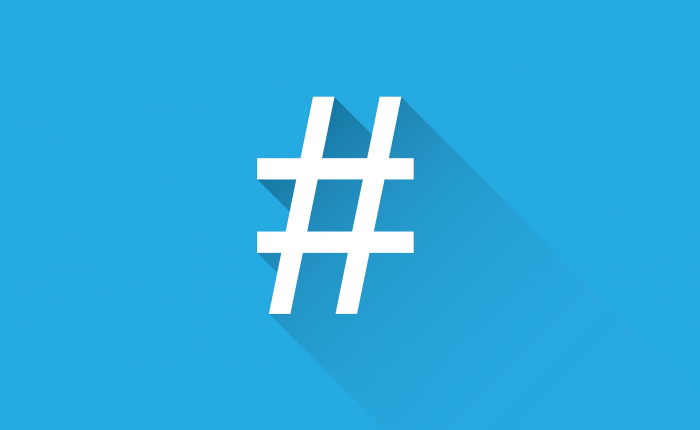Plan and perfect
August 14, 2019
The changing nature of technical writing
September 12, 2019
Hashing it out
There’s one button on your keyboard that has more power than any other. It has grown in popularity over the years and is now one of the most useful tools you can use to get traction on any social media website.
The humble hashtag (#) which first came into being in the 1960s and evolved from touchpad telephones – is now an integral part of any social media conversation. After appearing for the first time on Twitter, it is now a must-have if you want to be noticed on the worldwide web.
Those four lines work by labelling your posts by topic so they’re easier to find and can be picked up by social media users across the globe on any related topic, increasing brand awareness and engagement.
However, there are times and places to use this super symbol and, just like anything, there is a point where too many can be detrimental. Here are some tips on when to use a #hashtag and how to use it for better communication.
Use your keyword list when creating hashtags
While they may not always be relevant, your well-researched keywords are a staple for content creation, social media posts, and hashtags. Remember, keywords are ideas and topics that define what your content is about. In terms of Search Engine Optimisation they're the words and phrases that searchers enter into search engines, also called ‘search queries.’

Make sure your hashtags are relevant to the content you are posting
Don’t go mad and put hashtags on every word or word combination. It has to be connected to what you’re posting about. For example, if you post a blog about designing websites for small businesses in Melbourne, you may use hashtags like #Melbourne or #webdesign.
Use hashtags anywhere in your social media posts
There’s no rule as to where you put a hashtag in a social media post. Although the majority generally are seen at the end of a post, you don’t have to restrict them to the conclusions. Sprinkle them in the beginning, middle, or end – wherever they fit best.
Put yourself in your audience’s shoes when determining hashtags for your posts
Pretend you’re someone searching for the content you’ve just written. What searches may they put into Google to find some information about it? Don’t just think of the obvious. Use words, phrases, word combinations or even something closely related to the subject.
Keep hashtags short
Less is more when it comes to a hashtag. While #smallbusinesswebsitedesignMelbourne hits on all of the topics for a small business website design team in Melbourne, the likelihood of someone searching for that phrase is pretty slim. Instead, break it up into the most relevant keywords. It will still hit all the marks.
Use hashtags on all of your social media platforms (except LinkedIn)
Generally, try to keep it to two hashtags for Facebook, Pinterest, and Twitter posts. You can include several for Instagram, but cap it off around ten. Using hashtags excessively can make your brand look spammy, and it can annoy viewers.
Check out trending hashtags and use them in your posts when possible
While it is tempting to get in on the action by throwing in some popular hashtags, be sure they make sense in relation to your post. Just because something is trending, doesn’t mean your content will fit, and you run the risk of alienating the people you’re ultimately trying to attract.
Don’t go mad and put hashtags on every word or word combination. It has to be connected to what you’re posting about. For example, if you post a blog about designing websites for small businesses in Melbourne, you may use hashtags like #Melbourne or #webdesign.
Use hashtags anywhere in your social media posts
There’s no rule as to where you put a hashtag in a social media post. Although the majority generally are seen at the end of a post, you don’t have to restrict them to the conclusions. Sprinkle them in the beginning, middle, or end – wherever they fit best.
Put yourself in your audience’s shoes when determining hashtags for your posts
Pretend you’re someone searching for the content you’ve just written. What searches may they put into Google to find some information about it? Don’t just think of the obvious. Use words, phrases, word combinations or even something closely related to the subject.
Keep hashtags short
Less is more when it comes to a hashtag. While #smallbusinesswebsitedesignMelbourne hits on all of the topics for a small business website design team in Melbourne, the likelihood of someone searching for that phrase is pretty slim. Instead, break it up into the most relevant keywords. It will still hit all the marks.
Use hashtags on all of your social media platforms (except LinkedIn)
Generally, try to keep it to two hashtags for Facebook, Pinterest, and Twitter posts. You can include several for Instagram, but cap it off around ten. Using hashtags excessively can make your brand look spammy, and it can annoy viewers.
Check out trending hashtags and use them in your posts when possible
While it is tempting to get in on the action by throwing in some popular hashtags, be sure they make sense in relation to your post. Just because something is trending, doesn’t mean your content will fit, and you run the risk of alienating the people you’re ultimately trying to attract.
